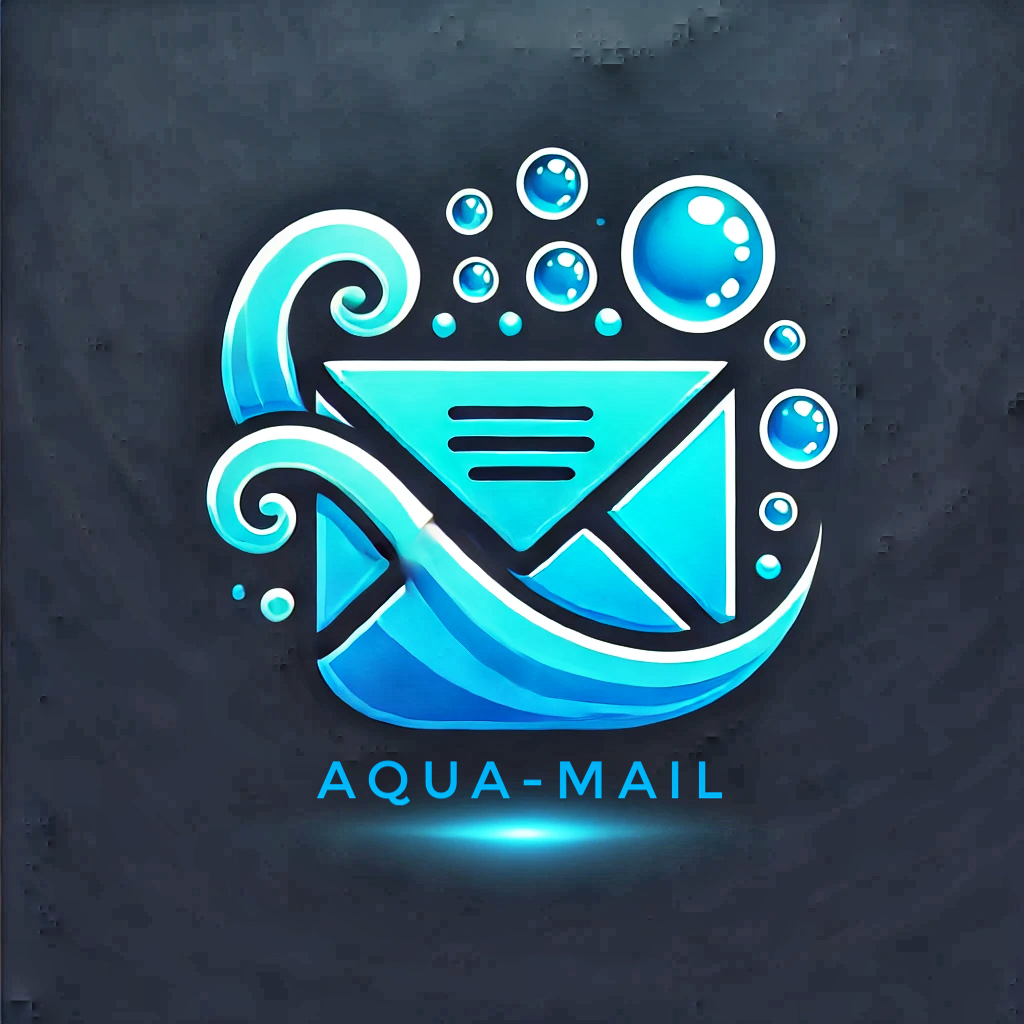Mastering Email Marketing
Strategies for Success
Welcome to our comprehensive guide on mastering email marketing! In this article, we'll delve into the intricacies of crafting compelling email content that captivates your audience and drives maximum engagement. We'll explore the art of building a strong email list through effective strategies that focus on growth and nurturing engagement with your subscribers.
Additionally, we'll uncover the secrets of optimizing your email campaigns to achieve higher conversion rates, as well as the importance of personalization and segmentation in tailoring your emails for success. By the end of this post, you'll have a deeper understanding of how to analyze metrics and data to enhance your email marketing performance, allowing you to take your email campaigns to the next level. Get ready to elevate your email marketing game and achieve outstanding results!

Crafting Compelling Email Content
for Maximum Engagement
Crafting Compelling Email Content
for Maximum Engagement
Creating compelling email content is a crucial component of any successful email marketing strategy. When it comes to engaging with your audience through their inbox, the content you deliver can make all the difference in whether your emails are opened, read, and acted upon. Crafting emails that captivate your subscribers and drive maximum engagement requires a thoughtful approach and an understanding of your audience's preferences and behaviors.
One key element to consider when creating compelling email content is personalization. Tailoring your emails to resonate with the specific needs and interests of your subscribers can significantly boost engagement rates. By segmenting your email list based on factors such as demographics, purchase history, or past interactions with your brand, you can deliver targeted content that speaks directly to the individual recipient.
Another important aspect of crafting compelling email content is the use of attention-grabbing subject lines and preview text. These elements are the first things that recipients see in their inbox, and they play a crucial role in determining whether an email gets opened or ignored. By creating subject lines that are concise, intriguing, and relevant to the email content, you can increase the likelihood of capturing your audience's attention and enticing them to read further.
In addition to personalization and effective subject lines, the actual content of your emails should be engaging, informative, and valuable to the recipient. Whether you're sharing promotional offers, educational resources, or curated product recommendations, the content should be well-crafted, visually appealing, and easy to digest. Including compelling visuals, such as images or videos, can also help to capture the reader's interest and encourage them to engage with your email.
Finally, don't forget to optimize your email content for mobile devices. With more people checking their emails on smartphones and tablets, it's essential to ensure that your emails are responsive and easily accessible on all screen sizes. By designing mobile-friendly emails with clear calls-to-action and user-friendly navigation, you can maximize engagement and drive conversions from your email campaigns.
In conclusion, crafting compelling email content is a critical aspect of successful email marketing. By personalizing your emails, creating attention-grabbing subject lines, delivering valuable content, and optimizing for mobile devices, you can enhance engagement with your audience and achieve your email marketing goals
Building a Strong Email List Strategies
for Growth and Engagement
Building a Strong Email List Strategies
for Growth and Engagement
Having a strong email list is crucial for the success of your email marketing campaigns. Your email list is not just a collection of email addresses but a group of individuals interested in your brand or content. To grow and engage your email list effectively, you need to implement the right strategies.
1. **Create Engaging Opt-In Opportunities:** Offer valuable content such as ebooks, guides, or webinars in exchange for email sign-ups. Make your opt-in forms prominent on your website and use compelling copy to encourage visitors to subscribe.
2. **Personalize Your Emails:** Personalization goes a long way in building relationships with your subscribers. Address them by their name and segment your list based on their preferences and behaviors to send targeted emails that resonate with them.
3. **Provide Consistent Value:** Make sure your emails provide value to your subscribers. Whether it's educational content, exclusive offers, or entertaining stories, ensure that your emails are something your subscribers look forward to receiving.
4. **Optimize for Mobile:** With a significant portion of emails being opened on mobile devices, it's crucial to ensure that your emails are mobile-responsive. Make sure your emails are easy to read and interact with on smartphones and tablets.
5. **Implement A/B Testing:** Experiment with different elements of your emails, such as subject lines, content, and calls to action, to see what resonates best with your audience. A/B testing allows you to refine your email marketing strategy for better results.
6. **Encourage Engagement:** Prompt your subscribers to engage with your emails by including interactive elements like polls, surveys, or social media buttons. Encourage them to reply to your emails or share them with their friends for increased engagement.
By implementing these strategies, you can build a strong email list that not only grows in numbers but also actively engages with your brand. Remember that quality trumps quantity when it comes to email marketing, so focus on nurturing relationships with your subscribers for long-term success
Optimizing Email Campaigns for Higher Conversion Rates
Optimizing Email Campaigns for Higher Conversion Rates
Email marketing is a powerful tool for businesses to connect with their audience, build brand loyalty, and drive sales. However, simply sending out emails is not enough to achieve success in today's competitive digital landscape. To truly leverage the benefits of email marketing, it is crucial to optimize your email campaigns for higher conversion rates.
One key strategy for optimizing email campaigns is to segment your email list based on demographics, interests, or past purchase behavior. By sending targeted and personalized content to different segments of your audience, you can increase engagement and conversion rates. For example, sending a special discount offer to customers who have previously made a purchase can help drive repeat sales.
In addition to segmentation, A/B testing is another essential component of optimizing email campaigns. By testing different subject lines, email copy, CTAs, and design elements, you can identify which elements resonate best with your audience and drive the highest conversion rates. This data-driven approach allows you to make informed decisions about your email marketing strategy and continuously improve your campaigns over time.
Furthermore, optimizing the timing and frequency of your email campaigns can also have a significant impact on conversion rates. By analyzing metrics such as open rates, click-through rates, and unsubscribe rates, you can determine the best times to send emails and how often to communicate with your audience. Tailoring your email schedule to align with your subscribers' preferences can help increase engagement and ultimately drive more conversions.
In conclusion, optimizing your email campaigns for higher conversion rates is a multifaceted process that involves segmentation, A/B testing, and strategic timing. By implementing these strategies and continually analyzing the performance of your campaigns, you can drive better results from your email marketing efforts and achieve greater success in reaching your business goals

Personalization and Segmentation
Tailoring Emails for Success
Personalization and Segmentation
Tailoring Emails for Success
When it comes to email marketing, personalization and segmentation are key strategies for achieving success. Personalization involves tailoring your emails to suit the individual recipient, making them feel seen and valued. This can include addressing them by their name, recommending products based on their past purchases, or sending them content that aligns with their interests.
Segmentation, on the other hand, involves dividing your email list into smaller segments based on specific criteria such as demographics, behavior, or purchase history. By segmenting your list, you can send targeted emails that are more relevant to each group of recipients. This increases the chances of engagement and conversion, as the content is more likely to resonate with the recipients' needs and preferences.
The combination of personalization and segmentation allows you to create highly tailored email campaigns that speak directly to your audience. By sending the right message to the right person at the right time, you can significantly improve open rates, click-through rates, and ultimately, your ROI.
To effectively implement personalization and segmentation in your email marketing strategy, start by collecting relevant data about your subscribers. This can include their purchase history, browsing behavior, location, and more. Use this data to create targeted segments and develop personalized content that speaks to each group's specific needs and interests.
Additionally, don't overlook the power of automation in personalizing and segmenting your emails. Email marketing platforms offer advanced automation features that allow you to trigger personalized emails based on specific actions or behaviors, ensuring that your messages are timely and relevant.
In conclusion, mastering the art of personalization and segmentation in your email marketing efforts can drive better results and foster stronger connections with your audience. By tailoring your emails for success, you can deliver more engaging content, boost conversions, and ultimately, build long-lasting relationships with your subscribers
Unlocking the Power of Data Maximizing
Email Marketing Performance
Unlocking the Power of Data Maximizing
Email Marketing Performance
In the world of email marketing, data is the secret weapon that can elevate your campaigns to new heights of success. By harnessing the power of data, marketers can gain valuable insights into their audience's preferences, behaviors, and interactions with their emails. This information is instrumental in crafting highly targeted and personalized campaigns that resonate with recipients on a deeper level.
One key aspect of maximizing email marketing performance through data is segmentation. By dividing your email list into smaller, more targeted segments based on factors such as demographics, past purchase history, and engagement levels, you can tailor your content to better suit the interests and needs of each group. This personalized approach can lead to higher open rates, click-through rates, and ultimately, conversions.
Another crucial way to leverage data in email marketing is through automation. By setting up automated workflows triggered by specific actions or time intervals, you can deliver the right message to the right person at the right time. Whether it's a welcome series for new subscribers, a follow-up sequence for abandoned carts, or a re-engagement campaign for inactive subscribers, automation allows you to engage with your audience in a timely and relevant manner without the need for manual intervention.
Furthermore, tracking and analyzing key performance metrics is essential for gauging the success of your email marketing efforts. Metrics such as open rates, click-through rates, conversion rates, and revenue generated can provide valuable insights into what is working well and what can be improved upon. By continuously monitoring and optimizing these metrics, you can refine your strategies over time to drive better results and ROI.
In conclusion, unlocking the power of data is crucial for maximizing email marketing performance. By segmenting your audience, leveraging automation, and analyzing key metrics, you can create more targeted, personalized, and effective campaigns that drive engagement, conversions, and ultimately, business growth. Embrace the wealth of data at your disposal and watch your email marketing efforts take flight
Conclusion
In conclusion, mastering email marketing requires a strategic approach that encompasses various key components. From crafting compelling content to building a robust email list and optimizing campaigns for higher conversions, every aspect plays a crucial role in achieving success in email marketing. Personalization and segmentation are essential for tailoring emails to resonate with your audience, driving engagement and ultimately improving performance metrics. By analyzing data and metrics effectively, you can continuously refine your strategies and elevate your email marketing game to yield outstanding results. Remember, email marketing is an ever-evolving landscape, and staying informed and adaptable is key to staying ahead in the game